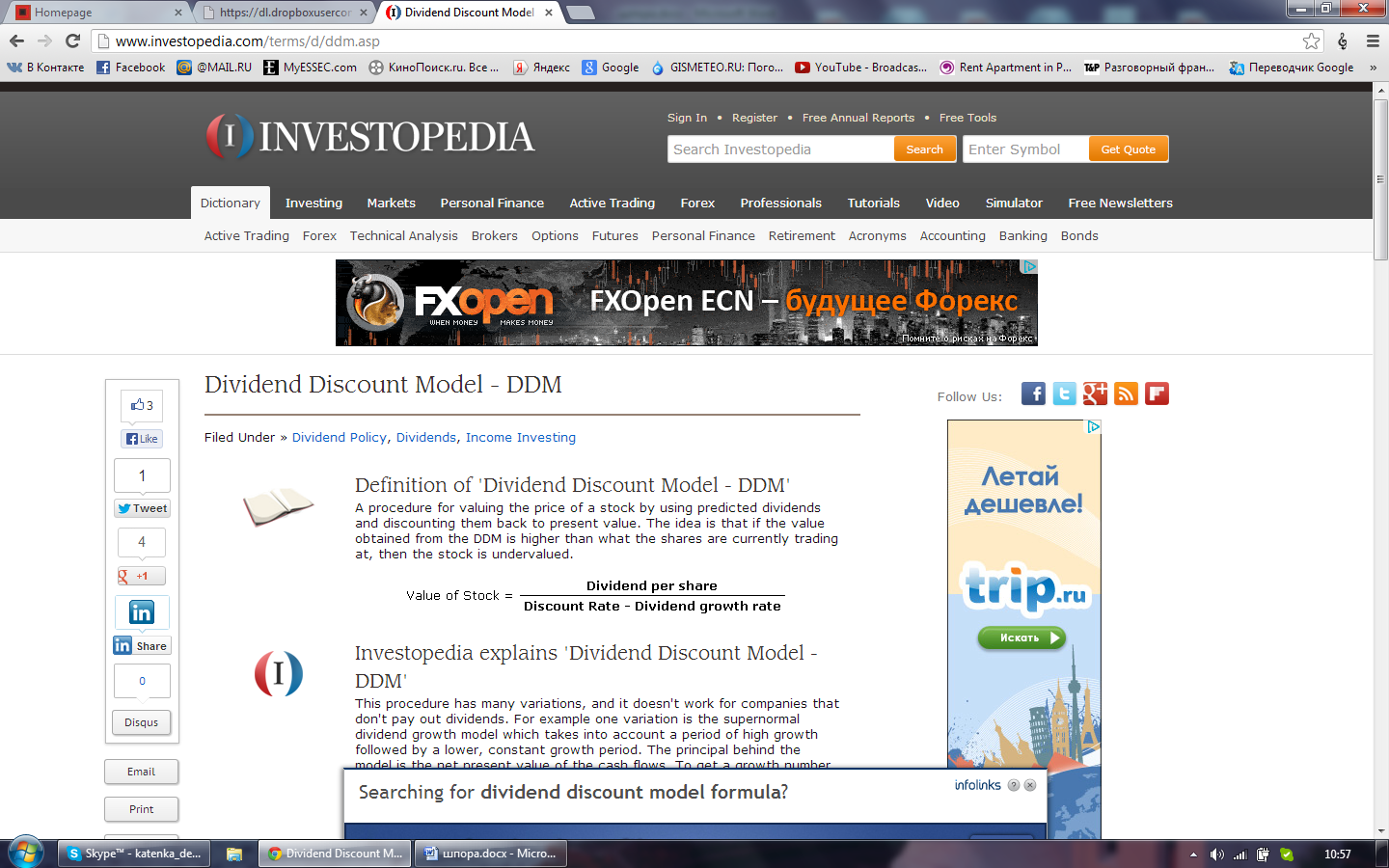Types of bonds, calculation of present value of discount and coupon bonds. Types of bond yield.
Bond - a debt investment in which an investor loans money to an entity (corporate or governmental) that borrows the funds for a defined period of time at a fixed interest rate. Bonds are used by companies, municipalities, states and U.S. and foreign governments to finance a variety of projects and activities.
Bonds are commonly referred to as fixed-income securities and are one of the three main asset classes, along with stocks and cash equivalents.
Par value = value borrowed.
Maturity date – when par value is paid back
Interest value fixed. (But general interest is flexible, so relative interest changes; bonds issued today may offer higher interest)
Types:
· By profitability: coupon (A debt obligation with coupons attached that represent semiannual interest payments), discount (zero-coupon - A debt security that doesn't pay interest (a coupon) but is traded at a deep discount, rendering profit at maturity when the bond is redeemed for its full face value.)
· By issuer: State, municipal, corporate, bank (pledged assets)
· By term: ST, LT, MidTerm
Calculation of present value:Present Value of a Bond is the value of a bond equal to the discounted remaining interest payments and the discounted redemption value of the bond certificate.
Variables
· PV of Bond=Current market value of bond
· Redemption Value=Value of bond when redeemed at maturity
· K=Current rate of return offered in the market
· N=Number of interest payments remaining until
· the bond matures
· Interest Payment=Amount of Each Interest Payment



49. Present value of shares: dividend discount model.
Calculating present value of a stock allows you to estimate the investment amount required to achieve a certain return at a future date.
There exist 2 approaches towards the analysis of shares – technical and fundamental.
Fundamentalapproach is based on the dividend discount model: procedure for valuing the price of a stock by using predicted dividends and discounting them back to present value. It is easier to analyze bonds as the exact cash-flows are known.
The idea is that if the value obtained from the DDM is higher than what the shares are currently trading at, then the stock is undervalued and that it is a good time to purchase shares.

The DDM is a tool used by many investors and analysts as a way of choosing stocks. The greatest disadvantage of the DDM is that it is inapplicable to companies which do not pay dividends.
By discounted, what I mean is that due to the time value of money, a payment in the future is worth less than the same payment today. For example, if you can earn a 10% rate of return on your money over time, then a payment of $10,000 one year from now would only be worth $9,091 to you today, because if you had $9,091 today, you could invest it at a 10% rate of return and turn it into $10,000 a year from now.
Analyzing shares we try to predict what dividend pay-out in the coming years will be. There could be 3 cases: supernormal growth rate, Constant growth at the rate g and the Constant dividends.
Gordon’s equation:
We have to find out the present value of future dividends
PV = Do(1+g)/(1+d) + Do(1+g)^2/(1+d)^2 + infinity, where g is the growth rate and d is the discount rate
In case when g < d then PV =Do(1+g) / (d-g)
Hence, we receive the current value of share and compare it with market price.
· PV > Market Price, the security is underpriced (buy)
· PV < Market Price, the security is overpriced (not buy)
